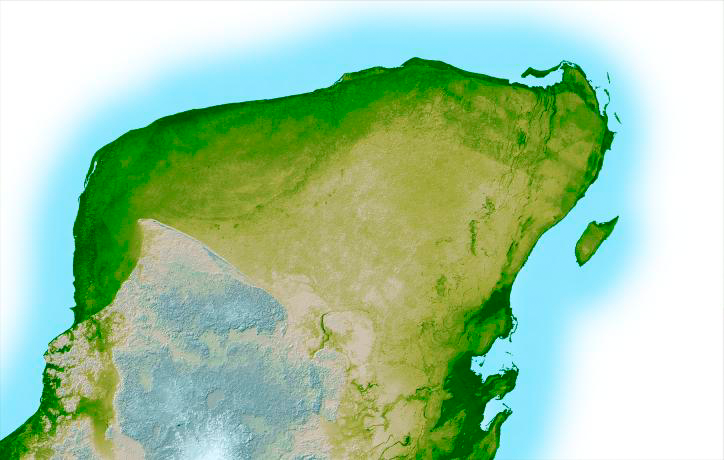The day Earth changed forever arrived approximately 66 million years ago when a massive asteroid, roughly 10-15 kilometers in diameter, slammed into what is now the Yucatán Peninsula in Mexico. This cataclysmic event, known as the Chicxulub impact, represents one of the most significant turning points in our planet’s history. The collision released energy equivalent to billions of atomic bombs, triggering global catastrophes that would reshape Earth’s biological landscape forever. The impact ended the 160-million-year reign of the dinosaurs and cleared the evolutionary stage for mammals—eventually leading to human dominance. This single moment in geological time demonstrates how quickly and dramatically life on Earth can change, offering profound insights into extinction, survival, and evolution that continue to inform our understanding of planetary science and biology today.
The Discovery of the Chicxulub Crater
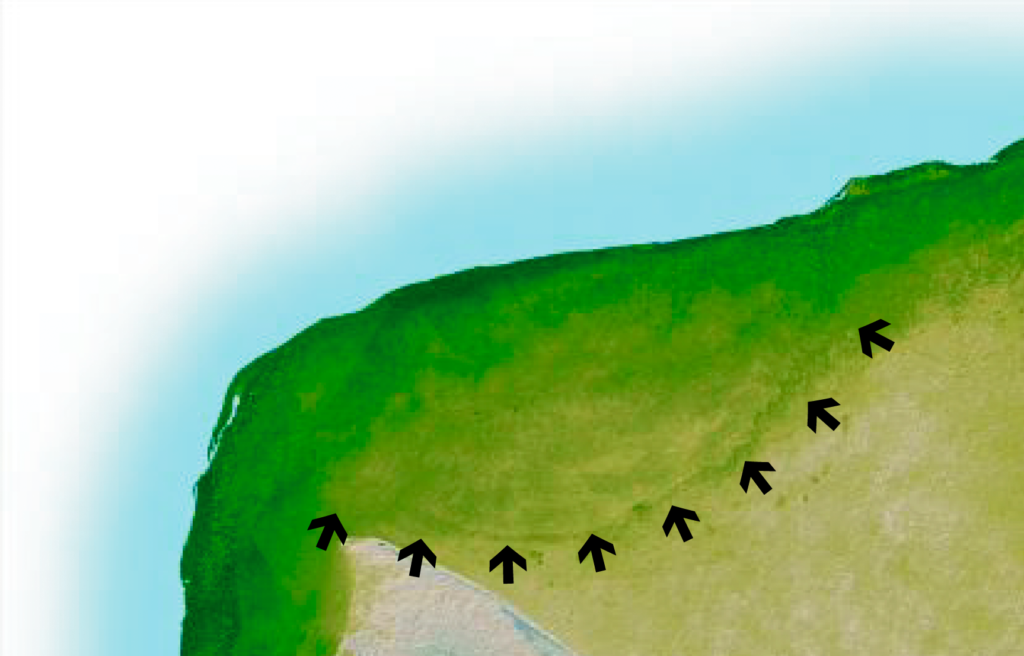
The Chicxulub crater remained hidden from science until relatively recently, despite being one of the most consequential geological features on Earth. In the late 1970s, geophysicists Antonio Camargo and Glen Penfield were working for the Mexican oil company Pemex when they identified circular gravitational anomalies beneath the Yucatán Peninsula. Their data revealed a massive buried structure approximately 180 kilometers (110 miles) in diameter, though the significance of their discovery wasn’t immediately recognized. It wasn’t until 1990 that scientists connected this crater to the end-Cretaceous mass extinction, when father-son team Luis and Walter Alvarez had already proposed that an asteroid impact had caused the dinosaurs’ demise based on elevated levels of iridium—an element rare on Earth but common in asteroids—found worldwide at the K-Pg boundary layer. The crater’s discovery provided the “smoking gun” evidence that confirmed their revolutionary hypothesis, ending decades of scientific debate about what caused the extinction event.
The Moment of Impact
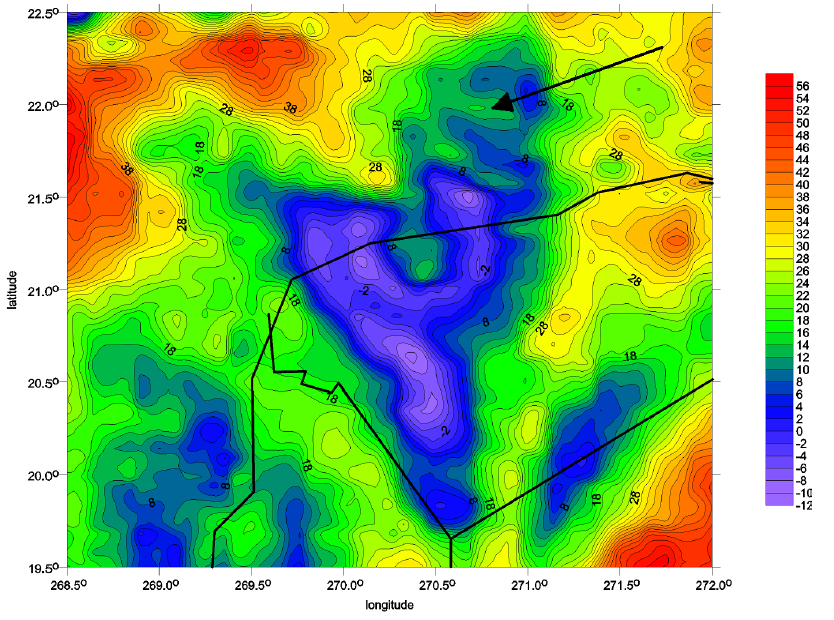
When the asteroid struck Earth 66 million years ago, the devastation began in an instant as the massive object plunged through the atmosphere at over 20 kilometers per second. Upon contact with Earth’s surface, the impact released energy estimated at over 100 trillion tons of TNT—billions of times more powerful than the atomic bombs dropped on Hiroshima and Nagasaki. The collision vaporized the asteroid itself and carved out a crater over 20 kilometers deep, temporarily displacing the Earth’s crust by pushing it downward before it rebounded to create a central peak. Molten rock and superheated debris were ejected into the atmosphere and even into space, with some material achieving escape velocity before raining back down across the planet. The immediate blast wave would have incinerated everything within hundreds of kilometers, creating hurricane-force winds that flattened forests thousands of kilometers from the impact site. Seismic waves equivalent to a magnitude 11 or 12 earthquake rippled through the planet, triggering massive tsunamis that would have reached heights of over 100 meters.
The Global Firestorm
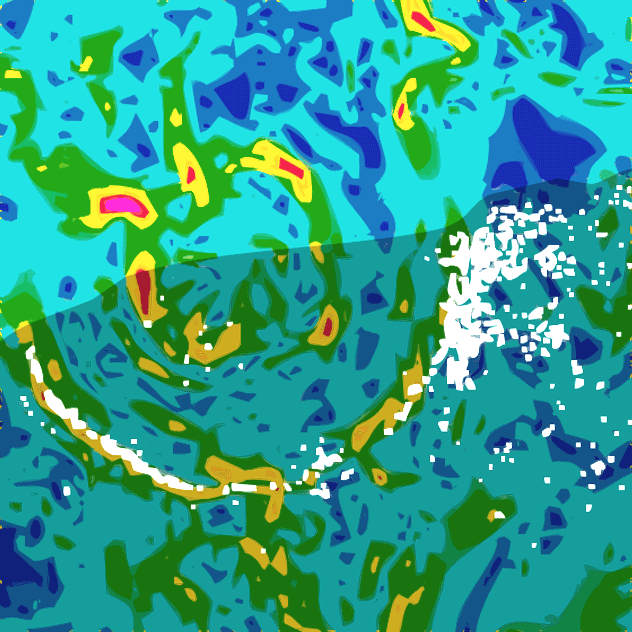
One of the most devastating consequences of the Chicxulub impact was the worldwide firestorm that followed in its wake. As superheated ejecta from the impact site reentered Earth’s atmosphere, they heated the upper atmosphere to temperatures that may have approached that of an oven, igniting global wildfires across multiple continents. Recent research has found evidence of soot and charcoal in the geological record from this period, suggesting that between 50% and 80% of Earth’s forests may have burned. These massive wildfires would have released enormous quantities of carbon dioxide, methane, and toxic gases into the already dust-filled atmosphere. The firestorms would have been particularly deadly for land-dwelling animals unable to seek adequate shelter, efficiently eliminating many species that might otherwise have survived the initial impact. Fossil evidence shows that many organisms were baked alive, while others suffocated from the smoke and depleted oxygen levels. The comprehensive destruction of plant life also eliminated food sources for herbivores, triggering the collapse of food chains across terrestrial ecosystems.
Impact Winter and Climate Chaos
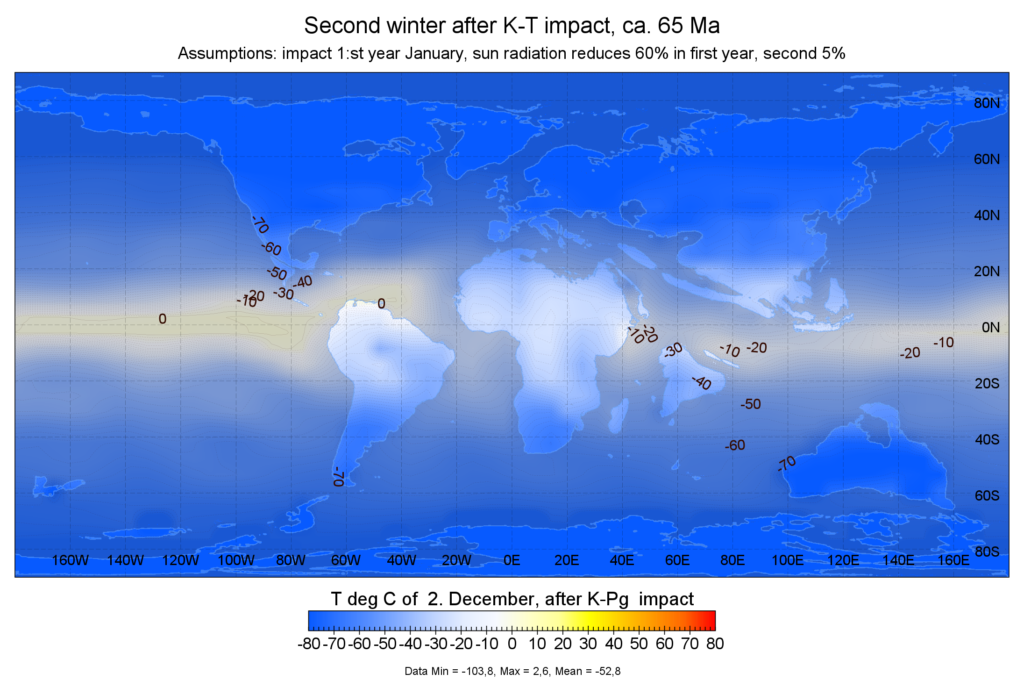
Following the immediate devastation of the impact, Earth entered a prolonged period of extreme climate disruption often called the “impact winter.” The collision launched immense quantities of dust, sulfur, and soot into the stratosphere, creating a thick global cloud layer that blocked sunlight from reaching Earth’s surface. Scientific models suggest that global temperatures may have dropped by as much as 10°C (18°F) and remained depressed for years or possibly decades. This sudden cooling would have been especially pronounced over continental areas, with some regions potentially experiencing freezing conditions even in previous tropical zones. The darkness was so severe that photosynthesis would have been severely limited or impossible for many months, collapsing the base of the food chain and eliminating primary producers on land and in the oceans. After the initial cooling period, the climate would have swung dramatically toward warming, as massive quantities of carbon dioxide released by the impact and subsequent fires drove temperatures upward in what may have been one of the most rapid periods of climate change in Earth’s history.
Marine Ecosystem Collapse

While the devastation on land was severe, the oceans experienced their catastrophic transformations following the Chicxulub impact. The asteroid struck in a shallow sea over carbonate-rich and sulfur-rich rocks, vaporizing these materials and releasing massive quantities of sulfur dioxide and carbon dioxide into the atmosphere. When these compounds eventually precipitated back into the oceans, they dramatically increased ocean acidity, making survival impossible for many marine organisms, particularly those with calcium carbonate shells or skeletons. The phytoplankton at the base of marine food webs were decimated by both the darkness and acidification, triggering a collapse that rippled upward through the trophic levels. Large marine reptiles such as mosasaurs and plesiosaurs disappeared completely, along with ammonites and approximately 75% of marine species. The ocean acidification event may have been so severe that it took marine ecosystems hundreds of thousands of years to fully recover their pre-impact biodiversity. Evidence from deep-sea cores shows a “strangelove ocean” period immediately following the impact—a time when biological productivity in the surface ocean was so diminished that very little organic material reached the seafloor.
The End of the Dinosaur Era

The Chicxulub impact marked the definitive end of the Age of Dinosaurs, eliminating all non-avian dinosaurs and fundamentally altering the course of evolution on Earth. After dominating terrestrial ecosystems for over 160 million years, the dinosaurs’ long evolutionary run came to an abrupt halt. The fossil record shows that dinosaurs were still diverse and widespread right up until the impact, with no clear evidence of gradual decline beforehand. All dinosaur groups were affected, from massive sauropods to smaller predatory theropods, with ecological specialization offering little protection against the global catastrophe. Only a single lineage of dinosaurs—the avian theropods that would eventually give rise to modern birds—managed to survive. Their smaller body sizes, ability to fly, varied diet, and possibly their enhanced metabolic efficiency may have provided the critical advantages that allowed these dinosaur descendants to endure while their relatives perished. The elimination of the non-avian dinosaurs created an evolutionary vacuum that would eventually be filled by mammals, setting the stage for the rise of an entirely different set of dominant large-bodied animals.
The Survival of Small Animals

While large animals suffered catastrophic losses during the extinction event, certain small-bodied creatures demonstrated remarkable resilience. Mammals, which had lived in the shadow of dinosaurs for over 150 million years, largely survived the extinction despite experiencing significant losses among their ranks. The mammals that endured typically weighed less than 1 kilogram and may have benefited from burrowing behaviors that provided shelter from the initial heat pulse and subsequent climate extremes. Similarly, small-bodied reptiles like certain lizards and snakes survived, while their larger relatives perished. Freshwater ecosystems showed higher survival rates than marine or terrestrial ones, suggesting that these environments offered some buffering from global environmental changes. The ability to enter torpor or hibernate may have been crucial for survival, allowing animals to reduce their metabolic needs during periods of food scarcity. Many survivors also exhibited dietary flexibility, allowing them to subsist on whatever resources remained available during the ecological collapse. These small survivors would become the ancestors of the diverse mammal, bird, and reptile species that would eventually repopulate and reshape the post-extinction world.
The Evolutionary Opportunity
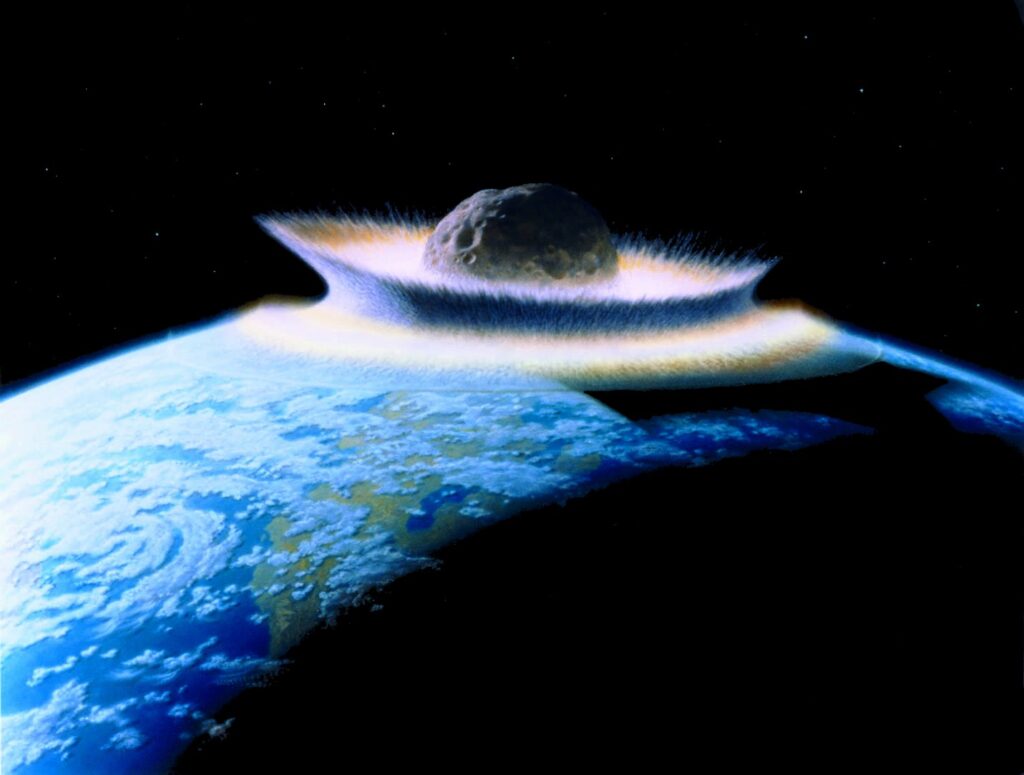
The mass extinction triggered by the Chicxulub impact, while devastating, created unprecedented evolutionary opportunities for the surviving species. With ecological niches suddenly emptied of their previous occupants, surviving groups could expand and diversify into roles that had been inaccessible to them for millions of years. This phenomenon, known as adaptive radiation, occurred rapidly in geological terms. Mammals, previously constrained mainly to nocturnal and small-bodied ecological roles during the dinosaur era, underwent explosive diversification starting within a few hundred thousand years after the impact. They eventually evolved into forms ranging from massive land animals to ocean-dwelling whales, aerial bats, and primates—including humans. Similar radiations occurred among birds, which diversified into thousands of species occupying ecological niches previously dominated by their dinosaur ancestors. The recovered terrestrial ecosystems featured fundamentally different structures than their Cretaceous predecessors, with flowering plants and mammals becoming increasingly dominant. This dramatic turnover of Earth’s ecological systems represents one of the most significant examples of how catastrophe can reset evolutionary trajectories, demonstrating both the resilience of life and the contingent nature of evolutionary history.
The Rise of Mammals

In the wake of the Chicxulub extinction event, mammals experienced an evolutionary renaissance that would ultimately lead to their dominance of the terrestrial realm. Before the asteroid impact, mammals had existed for over 150 million years but remained predominantly small, nocturnal creatures limited by dinosaur dominance. The fossil record shows that within just 300,000 years after the extinction—an eyeblink in geological time—mammals had already begun dramatically increasing in body size and occupying new ecological niches. By 10 million years post-impact, mammals had evolved into forms occupying nearly every terrestrial ecological role previously dominated by dinosaurs and other reptiles. The Paleocene and Eocene epochs witnessed an explosion of mammalian diversity, including the emergence of the major mammalian orders familiar today. Primates, rodents, carnivores, ungulates, and other groups all trace their origins to this post-extinction radiation. This mammalian ascendancy was not simply opportunistic but reflected key adaptations—including endothermy (warm-bloodedness), sophisticated parental care, and advanced sensory systems—that proved advantageous in the post-Cretaceous world. The evolutionary success of mammals following the Chicxulub impact represents one of the most dramatic examples of ecological replacement in Earth’s history.
The Recovery of Plant Life

Plant communities experienced profound transformations following the Chicxulub impact, with initial devastation followed by remarkable recovery and reorganization. The global firestorms and impact winter devastated forests worldwide, with fossil evidence showing a distinctive “fern spike” immediately after the extinction boundary—a phenomenon where ferns, as hardy pioneer species, temporarily dominated landscapes before other plants could recover. This initial fern dominance represents an ecological succession pattern following g catastrophic disturbance that has been observed after other mass extinctions. As conditions improved, flowering plants (angiosperms), which had already been diversifying during the late Cretaceous, accelerated their expansion and eventually came to dominate most terrestrial ecosystems. The extinction event eliminated many gymnosperm (conifer) species that had been common in Cretaceous forests, dramatically shifting the composition of recovering plant communities. New plant-pollinator relationships evolved as insects and plants co-evolved following the disruption, establishing many of the ecological relationships that characterize modern ecosystems. The evolutionary innovations of flowering plants—including efficient reproductive strategies, faster growth rates, and adaptable life histories—proved advantageous in colonizing and dominating the post-impact world, fundamentally reshaping terrestrial ecosystems.
Legacy in Earth’s Geological Record
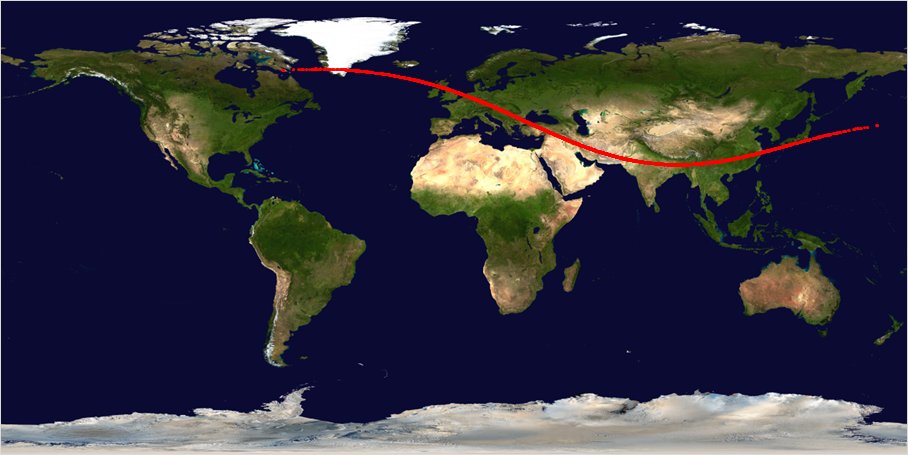
The Chicxulub impact left an indelible mark on Earth’s geological record that scientists can identify worldwide, providing critical evidence for understanding this pivotal moment in planetary history. The most distinctive feature is the K-Pg boundary layer (formerly known as the K-T boundary), a thin sedimentary layer found globally that contains several telltale signs of the impact event. This boundary layer is enriched with iridium, an element rare in Earth’s crust but common in asteroids, at concentrations up to 160 times normal background levels. The layer also contains shocked quartz—minerals displaying distinctive microscopic deformation patterns that can only form under the extreme pressures of massive impacts or nuclear explosions. Tiny spherules of glass called tektites are also present, created when rock vaporized by the impact cooled and condensed in the atmosphere before falling back to Earth. In North America, the boundary layer often contains a distinctive “boundary clay” with soot evidence of the global firestorms. The impact itself transformed over 2,000 cubic kilometers of rock, creating a geophysical anomaly that modern instruments can still detect beneath the Yucatán Peninsula. These geological markers serve as a permanent chronicle of the day that changed Earth’s evolutionary trajectory forever.
Scientific Debates and Ongoing Research
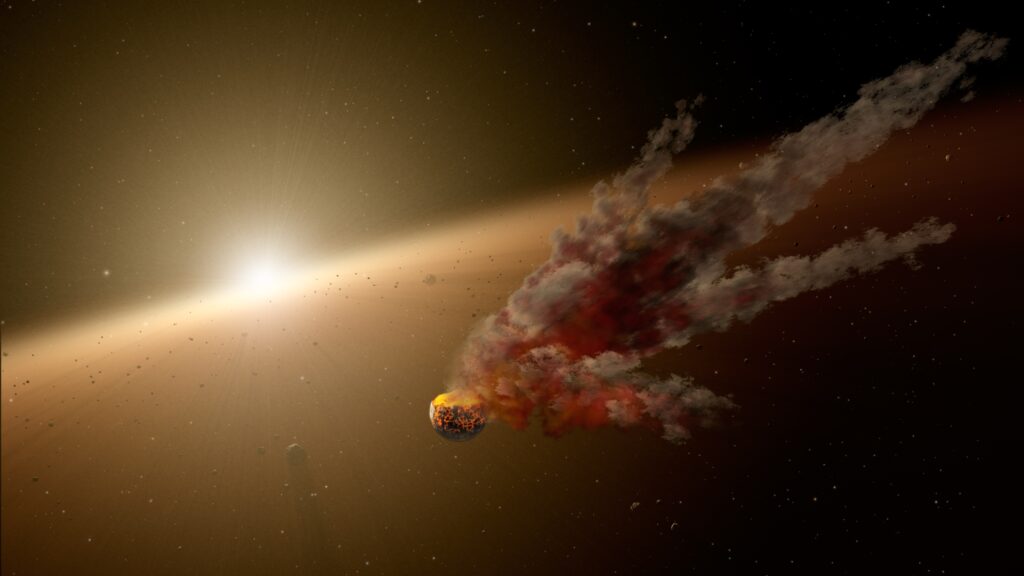
Despite widespread scientific consensus that the Chicxulub impact triggered the end-Cretaceous mass extinction, researchers continue to investigate numerous questions about the event and its consequences. One ongoing debate concerns whether the asteroid impact was the sole cause of the extinction or whether other factors, such as the massive volcanic eruptions of the Deccan Traps in India, played significant complementary roles. Recent high-precision dating suggests the Deccan volcanism intensified following the impact, potentially indicating that the asteroid triggered increased volcanic activity through seismic effects. Scientists also continue investigating the exact kill mechanisms that determined which species survived and which perished, as selective survival patterns remain incompletely understood. The duration of recovery for various ecosystems is another active area of research, with new fossil discoveries regularly refining our understanding of the post-extinction radiation. Researchers are applying increasingly sophisticated modeling techniques to reconstruct the physics of the impact itself, including temperature changes, atmospheric effects, and tsunami propagation. The Chicxulub event also serves as an important analog for understanding extinction risk today, as scientists study the resilience and vulnerability factors that influenced species survival during Earth’s most recent mass extinction.
Lessons for Humanity and Planetary Defense
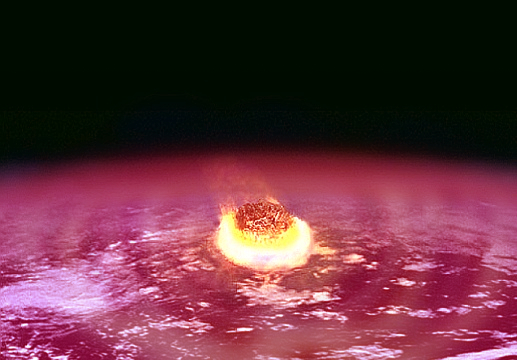
The Chicxulub impact offers profound lessons for humanity regarding cosmic threats and the fragility of Earth’s biological systems. Unlike the dinosaurs, humans possess the technological capability to detect and potentially divert threatening near-Earth objects before an impact occurs. NASA and other space agencies now maintain dedicated programs for tracking potentially hazardous asteroids and comets to provide adequate warning time should a dangerous object be discovered on a collision course with Earth. Various deflection technologies are being developed and tested, such as NASA’s DART (Double Asteroid Redirection Test) mission, which successfully demonstrated the ability to alter an asteroid’s trajectory in 2022. Beyond planetary defense, the Chicxulub event highlights the vulnerability of Earth’s ecosystems to rapid environmental change, offering sobering context for modern biodiversity loss and climate change. The mass extinction demonstrates how quickly complex ecological systems can collapse when environmental thresholds are crossed, even after millions of years of apparent stability. As the only species aware of this history and capable of mitigating similar threats, humans bear a unique responsibility for planetary stewardship that extends beyond our immediate survival to the preservation of Earth’s biodiversity—itself the product of recovery from previous catastrophes, including the Chicxulub impact.
Conclusion
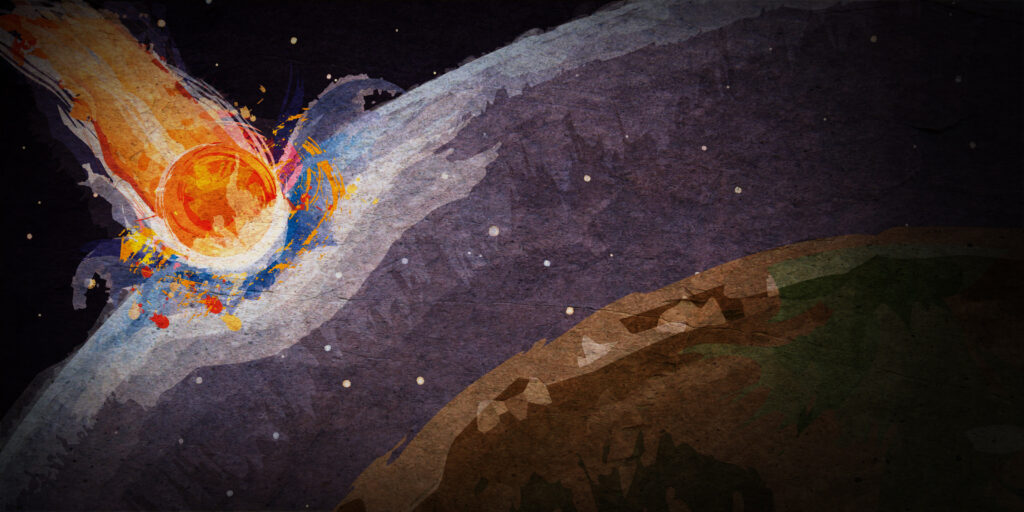
The Chicxulub impact represents a pivotal moment in Earth’s history—a single day that redirected the course of evolution and ultimately enabled the rise of mammals and eventually humans. From the initial devastation of the impact through the global firestorms, climate disruption, and ecological collapse, this event demonstrates the profound vulnerability of life to cosmic catastrophes. Yet it equally reveals life’s remarkable resilience, as surviving species diversified to fill empty niches and rebuild complex ecosystems in the aftermath. The evolutionary consequences continue to shape our world today, as every mammal, bird, and flowering plant owes its ecological opportunity partly to this ancient disaster. As we continue to study the Chicxulub impact and its aftermath, we gain not only insights into Earth’s deep history but also crucial lessons about extinction, survival, and the interconnectedness of Earth systems that may help us navigate our own species’ future on this dynamic planet.

